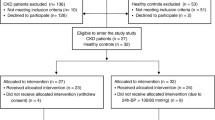Abstract
Introduction
The kidneys contribute to maintain plasma osmolality in normal range by achieving the adequate daily osmolar urine excretion (DOUE). An equation has been described for estimating the expected daily urine volume necessary to excrete the osmolar load required to keep serum osmolality in normal range. According to this equation, a difference between real and expected daily osmolar diuresis (DOD) can be obtained, being normally this difference value zero (± 500 cc). However, a positive DOD difference signifies a reduced urine concentration capability, while a negative DOD difference signifies a reduced urine dilution capability. Therefore, we decided to originally investigate how DOUE, and DOD difference are modified through the different stages of CKD.
Materials and methods
61 patients suffering from CKD (stages I–V) secondary to glomerulopathies were studied. Creatinine clearance (CrCl), DOUE, and difference between real and expected DOD were obtained from each patient. Besides, correlation (Spearman) between CrCl and DOUE, and between CrCl and real–expected DOD difference were also obtained.
Results
Spearman correlation between CrCl and DOUE was positive and significant (Spearman’s ρ = 0.63, p < 0.0001). In addition, CKD patients who were not able to achieve the minimal DOUE required (600 mOsm/day) were mostly those with CrCl < 40 mL/min. Spearman correlation between CrCl and real–expected DOD difference was negative and significant (Spearman’s ρ = − 0.4, p < 0.0013). Additionally, abnormal DOD difference (> 500 cc) was found in CKD patients with CrCl < 80 mL/min/1.73 m2.
Conclusion
Daily osmolar urine excretion, and difference between real and expected daily osmolar diuresis are simple and significant clinical parameter which can be useful to easily evaluate urine concentration–dilution capability (tubular function) in CKD patients.




Similar content being viewed by others
References
Rennke H, Denker B (2007) Renal pathophysiology. The essentials. Lippincott Williams & Wilkins, Philadelphia
Halperin ML, Goldstein MB (1999) Fluids, electrolytes, and acid-base physiology. A problem-based approach. Saunders, Philadelphia
Musso CG, Gonzalez-Torres H, Aroca-Martinez G (2019) Evaluation of osmolar diuresis as a strategy to increase diagnostic sensitivity in acute kidney injury. Arch Argent Pediatr 117(2):e202–e204
Glassock R, Delanaye P, El Nahas M (2015) An age-calibrated classification of chronic kidney disease. JAMA 314(6):559–560
Minutolo R, Lapi F, Chiodini P, Simonetti M, Bianchini E, Pecchioli S, Cricelli I, Cricelli C, Piccinocchi G, Conte G, De Nicola L (2014) Risk of ESRD and death in patients with CKD not referred to a nephrologist: a 7-year prospective study. Clin J Am Soc Nephrol 9(9):1586–1593. https://doi.org/10.2215/CJN.10481013
Malmgren L, McGuigan FE, Berglundh S, Westman K, Christensson A, Åkesson K (2015) Declining estimated glomerular filtration rate and its association with mortality and comorbidity over 10 years in elderly women. Nephron 130(4):245–255. https://doi.org/10.1159/000435790
Musso CG, Gavrilovici C, Covic A (2017) Tubular secretion in chronic kidney disease staging: a new proposal. Int Urol Nephrol 49(11):2087–2089. https://doi.org/10.1007/s11255-017-1673-0
Author information
Authors and Affiliations
Corresponding author
Ethics declarations
Conflict of interest
All the authors declare that they have no conflict of interest.
Ethical approval
All procedures performed in studies involving human participants were in accordance with the ethical standards of the institutional and/or national research committee and with the 1964 Helsinki declaration and its later amendments or comparable ethical standards.
Informed consent
Informed consent was obtained from the patient.
Additional information
Publisher's Note
Springer Nature remains neutral with regard to jurisdictional claims in published maps and institutional affiliations.
Rights and permissions
About this article
Cite this article
Musso, C.G., Juarez, R., Terrasa, S. et al. Osmotic diuresis in chronic kidney disease: its significance and clinical utility. Int Urol Nephrol 51, 1403–1406 (2019). https://doi.org/10.1007/s11255-019-02202-5
Received:
Accepted:
Published:
Issue Date:
DOI: https://doi.org/10.1007/s11255-019-02202-5




